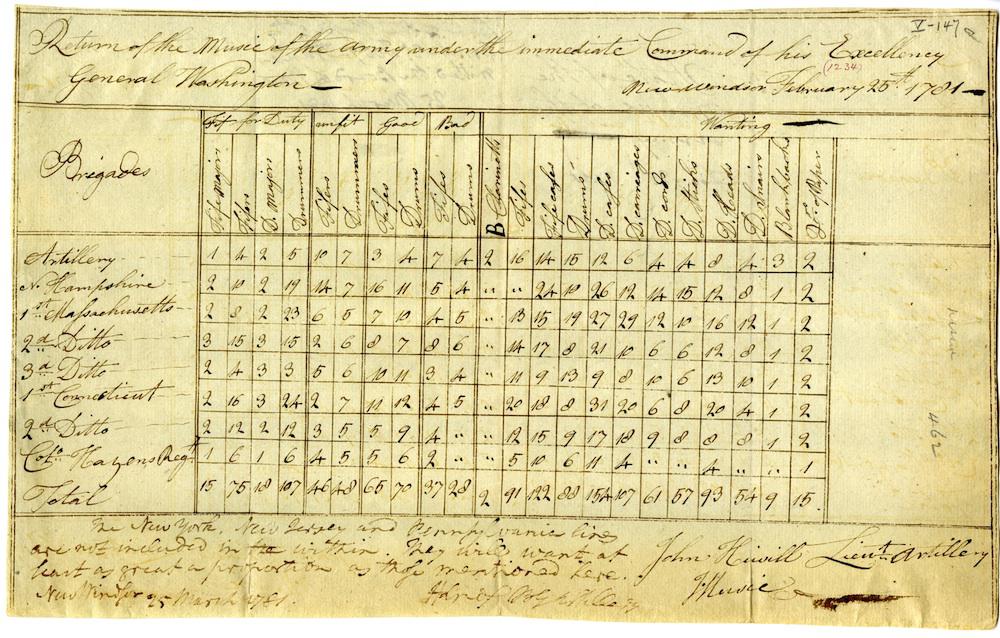The Vault is Slate’s history blog. Like us on Facebook, follow us on Twitter @slatevault, and find us on Tumblr. Find out more about what this space is all about here.
In what was to be the last year of major conflict in the Revolutionary War, Henry Knox submitted this list, tallying numbers of musicians and instruments in the brigades under the immediate command of George Washington, to the Continental Board of War. The letter, and the enclosure, are now in the collection of the Gilder Lehrman Institute of American History.
During the conflict, the army used fifes and drums not only to bolster battlefield morale, but also for communication and regimentation. Music, standardized for the army’s purposes by the drillmaster Baron Friedrich Von Steuben, served as signal in battle; the fife has a piercing sound that could carry above a fracas. Fife-and-drum signals also told soldiers in camp when to wake up, go fetch wood or provisions, or show up for church.
As this report makes clear, the chronic supply issues that bedeviled the Continental Army affected its musicians as well. Instrument production was not standardized, meaning that some fifes and drums that the musicians had in hand were usable but unreliable. (Thus, the tally’s separate columns for “good” and “bad” available instruments.)
The survey shows that the musicians were also lacking equipment. Cases, drumsticks, drum heads, blank books, and paper were on their wish list.
The survey shows that the musicians were also lacking equipment. Cases, drumsticks, drum heads, blank books, and paper were on their wish list.

Image courtesy of the Gilder Lehrman Institute of American History.